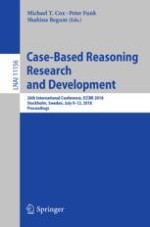This book constitutes the refereed proceedings of the 26th International Conference on Case-Based Reasoning Research and Development, ICCBR 2018, held in Stockholm, Sweden, in July 2018.
The 39 full papers presented in this book were carefully reviewed and selected from 77 submissions. The theme of ICCBR-2017, "The Future of CBR", was highlighted by several activities.
These papers, which are included in the proceedings, address many themes related to the theory and application of case-based reasoning and its future direction. Topics included multiple papers on textual CBR and a number of cognitive and human oriented papers as well as hybrid research between CBR and machine learning.
